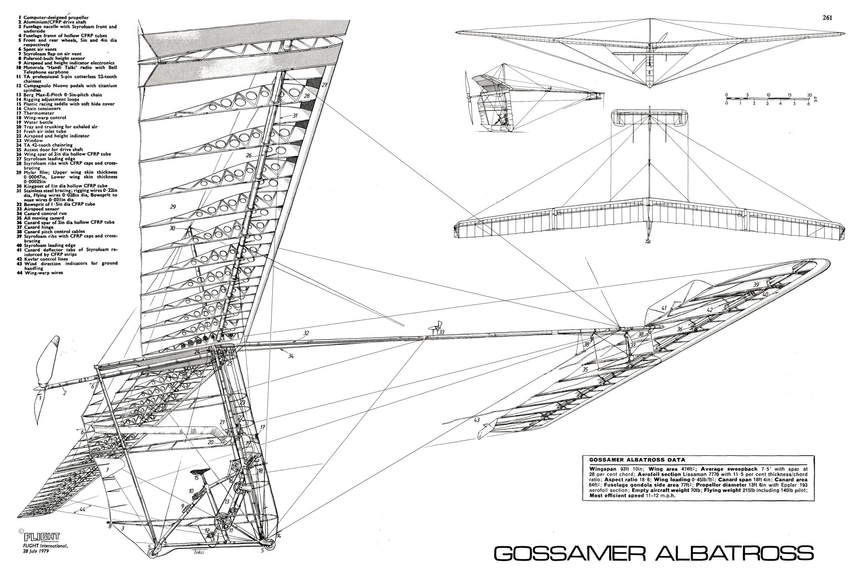A New Crew of Magnificent Men in Their Flying Machines Fred To, former head of the British Human Powered Flying Club, has shared a major announcement. “The Great Human Powered Aircraft Race will take place in June 2022 and is now open for entries. Teams will attempt to cross the Channel from England to France in an aircraft powered solely by the pilot’s pedaling. They will compete for a £50,000 ($68,785) prize awarded to the team that crosses the Channel fastest, with £10,000 ($13,757) for the second fastest team and £5,000 ($6.878) for the fastest female pilot. “The first and only crossing of the Channel in a human powered aircraft (HPA) was 42 years ago by Bryan Allen in the aircraft Gossamer Albatross designed by Paul MacCready; no successful attempts have been made since. Human-powered flying remains one of the world’s most exclusive sports, with more people having flown into space than have flown a human powered aircraft. This is …
Tehachapi 2013 – Baby Bowlus and Silent Electro
Tehachapi is a one-time railroad stop, 4,000 feet in the high mountain desert near Mojave, California. Trains don’t stop there very often these days, but multi-engined, two-mile-long bearers of cargo and commerce run over the tracks 50 times a day, making the long haul toward Bakersfield or Mojave. Hawley Bowlus helped build the Spirit of St. Louis and later taught the Lindberghs to fly sailplanes, with some lessons taking place in the high desert air above Tehachapi. Today, the once bare hills are covered with over 5,000 wind turbines, their giant rotors pointed into the prevailing westerlies. At the base of these hills, Mountain Valley Soaring has a base, and Jeff Byard has a hangar that hosts the annual meeting of the Experimental Soaring Association. Members gather to hear talks on the history, technology, and joy of soaring – and get in some flying between – or instead of – lectures . This year, the Labor Day weekend centered on …
AeroVelo Captures Sikorsky Prize
This was not their first rodeo. Core members of the AeroVelo human-powered helicopter team, “Have been working together since 2006 on the world record setting Snowbird Human-Powered Ornithopter as well as the series of high-speed streamlined bicycles. Over the course of the various projects we have built a wealth of experience in human performance, lightweight composite construction, and advanced aerodynamic design.” Their Snowbird maintained altitude for 19.3 seconds on only human power. Even though towed into the air, it flew on its own after the pilot released the towrope. The beauty of this flight is so compelling the footage has been used in Honda commercials. Their record attempt streamlined bicycles are part of a series that make attempts on the human-powered land speed record. According to AeroVelo, “In both 2010 and 2011 the team set the Collegiate human-powered land speed records.” Aerovelo’s Vortex streamlined bicycle, one of a series of high-speed human-powered racers This level of dedication and an obvious …
Lifting Yourself by a Disappearing Thread
The University of Maryland announced the successful 11.4 second flight of an American human-powered helicopter with a female pilot – now the National record holder and successor to the first female flight on such a machine – 17 years ago. In 1994, your editor attended a human-powered aircraft symposium in Seattle at the Boeing Museum of Flight. Paul MacCready signed my copy of Gossamer Odyssey and I was official observer (for Chris Roper of the Royal Aeronautical Society) of the first female-powered helicopter flight. Ward Griffiths, a svelte young thing from a local bike shop, cranked the very similar (to Gamera) thing into the air for 8.6 seconds – a first and a female record at that time. A Japanese gentleman had done 15 seconds the day before and knocked the O. J. Simpson investigation off the front page of the Seattle Post-Intelligencer. Flights took place in the Boeing 777 preparation hangar, while the big jet spooled up and taxied around outside. …
Doing More With Much, Much Less
This dictum from Paul MacCready that we can do a great deal more with far less material expenditure is well realized in a big way by researchers at the California Institute of Technology (Caltech) with their new type of solar cell. Using about two percent of the silicon semiconductor material normally required for crystalline cells, and achieving a high level of energy conversion, the new cells may also be relatively inexpensive to manufacture. As noted by Harry Atwater in Caltech’s press release, “These solar cells have, for the first time, surpassed the conventional light-trapping limit for absorbing materials…” Atwater is Howard Hughes Professor, professor of applied physics and materials science, and director of Caltech’s Resnick Institute, which according to the press release, “focuses on sustainability research.” Arranged like rug fibers in a vertically-oriented array, the individual silicon wire solar cells comprise a small portion of the total horizontal area of the cell, the rest being an inexpensive polymer substrate. Atwater …

